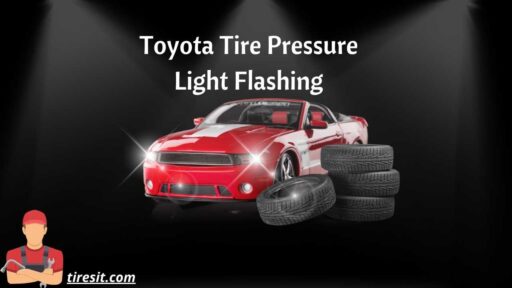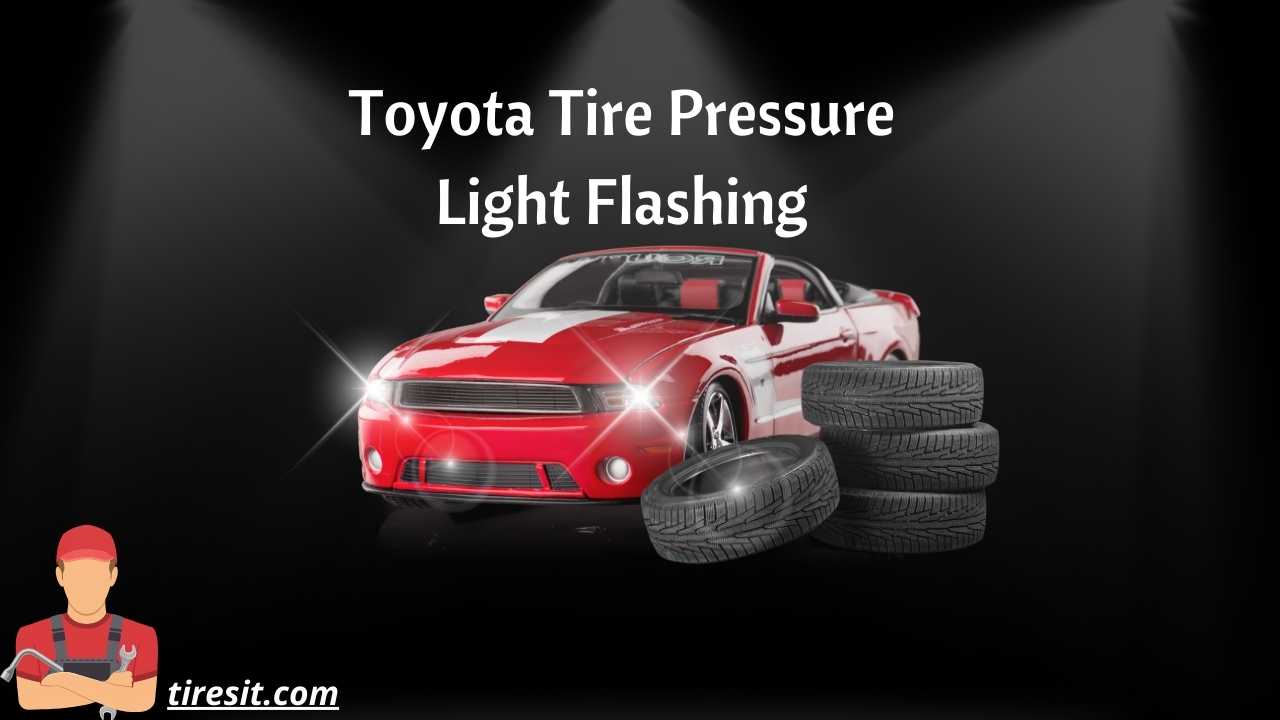Ensure your Toyota Tire Pressure Light Flashing is not a cause for concern by following our expert advice. Drive smoothly and securely with peace of mind.
Car maintenance can sometimes feel like a puzzle; it is a journey to be deciphered. In the multitude of signals and signs by our cars, the Toyota Tire Pressure Light Flashing is one not to ignore. This small light plays an important role in the security and best performance of our car. We will seek to unveil the meaning behind this blinking light as well as what it means in relation to its implications and how it should be handled.
Toyota Tire Pressure Light Flashing Light Explained
To comprehend what this flash indicates, you must first learn the ropes in dealing with a Toyota Tire Pressure Light Flashing warning lamp that keeps blinking. This warning lamp on your dashboard constantly keeps a check on the air pressure inside the tires. Generally, its function is to notify you if one or more tires have lower than normal air pressure. However, this indicator does not only mean that there is less air inside but also that too much has been pumped into them.
The steady light presence of the Toyota tire pressure bulb suggests that either one or all tires suffer from low or high-pressure problems, respectively. However, this misty signal could suggest several things when it starts flashing. It shows that usually, there is some issue within the TPMS that may be minor or serious enough to warrant immediate attention from a specialist.
All Toyota vehicle owners must understand what their car’s TPMS says clearly before drawing conclusions based on its behavior alone, as dropping mileage standards can risk life and limb every time they are behind the wheel.
What Makes The Toyota Tire Pressure Light Blink?
As we go deeper into why your Toyota tire indicator may keep blinking, we discover an array of causes for such instances occurring at intervals. First and foremost, remember that this alert is actually an indication of something wrong with your car’s tire inflation system itself. Sensor issues, battery life concerns, and environmental conditions are among the other possible reasons for these anomalies.
Sensor troubles are the commonest reasons for this malfunctioning. All vehicles, including most Toyota models, have sensors in every tire, including the spare wheels, which talk to the car’s computer. Such flashing may be due to one or more of those sensors not giving back accurate information. This defect could be attributable to physical damage to the sensor attachment part or the running out of power.
Additionally, there is also a possibility that there are temperature fluctuations around you. Tire pressures change with ambient conditions; they expand when hot and contract when cold. Although this alone doesn’t mean that the light will flash, if TPMS is unable to recognize these pressure changes, it may show them as a fault by blinking.
Risks Associated with Toyota Tire Pressure Blinking
This is not a joke; do not take driving with a blinking Toyota tire pressure light lightly. It means that you should be aware of something about your tires rather than just focus on their air pressure alone because its inability to detect any fault in this regard indicates a wrongly working system for such an important part of your car’s health. Any driver ignoring it might end up putting his/her life at risk since several hazardous situations can ensue.
Initially, driving on tires that have an incorrect pressure is more risky since one might be moving on wrongly inflated ones. This can have a significant impact on the handling and stopping power of your car, making it difficult to control in emergency situations. Moreover, wrong tire pressure leads to tire failure, including blowouts that are dangerous at high speeds.
Additionally, riding on either over-inflated or under-inflated tires results in uneven tire wear. In turn, it shortens the lifespan of your tires, hence necessitating frequent replacements, and affects fuel economy as well. Such a situation is not safe for you because you will have to pay extra costs every time.
What do you do when your Toyota’s tire pressure light flashes?
When a flashing Toyota tire pressure light comes up, there is a need for immediate action, given its significance. The first thing would, therefore, be parking safely beside the road so that one can assess the situation. A visual examination should then follow to see if there are signs of underinflation or damage before taking any action. If nothing seems out of place at this point, it’s advisable to check along with adjusting the pressure in the tires.
Check and Adjust Tire Pressure
Keeping your tires inflated at the manufacturer-specified PSI is important. This information can usually be found in the owner’s manual or on a label located inside the driver’s side door frame area. Using an accurate tire pressure gauge, go around checking each tire, including the spare tire, where some systems monitor all five wheels.
In case any tires are low, fill them up using an air compressor until they reach their recommended level, while if they are too high, let some air out gently until they attain optimum pressures Once all tires are correctly inflated, within a short drive distance from now on, you should notice that the blinking warning light will go off. However, still having this sign flashing means that further issues regarding TPMS must be diagnosed by professionals.
Flashing Toyota Tire Pressure Light: What Causes It?
A flashing Toyota tire pressure light that appears to be cryptic is usually associated with a few likely issues. Besides the discrepancies in tire pressure and sensor failure, this warning can occur due to battery drains in the sensors, sensors getting damaged from obstacles on the road, or even incompatible tires being fitted.
Sensor batteries typically have a limited life span of 5-10 years. The ability of the sensor to transmit data declines as these batteries wear down, leading to possible system malfunctions and blinking lights. Similarly, damage caused by hitting a curb, debris, or a pothole can render it operable.
Moreover, installing tires that are not compatible with Toyota’s TPMS can also cause issues. Because they might be incompatible with the system’s specifications through design or any other reason, such disparities may hinder TPMS from effectively supervising air pressure, hence resulting in illuminated light.
Preventive Measures to Avoid Flashing Toyota Tire Pressure Light
It is always better to prevent than cure, especially when it comes to the maintenance of your car. Regular checks and services go a long way towards avoiding flashing lights indicating low tire pressures in Toyotas. You are advised to keep monitoring tire pressures regularly even when no light comes up so as to ensure that your tires are always at their recommended levels, thereby minimizing false alarms set off by TPMs by Teresa Tamable.
What’s more, while having your vehicle serviced at normal maintenance intervals, you can also have your TPMS checked, thus preventing any potential problems in the future. This may involve inspecting the sensors’ state and power supply and ensuring that the TPMS is compatible with its sensor after changing or rotating the tires.
Moreover, it also plays a vital role in protecting your tires from unnecessary wear and damage. It means that poor driving habits are likely to harm your tires and that you should be aware of road conditions that might be detrimental to the sensors. Thereby, through these precautions, you will be able to greatly reduce occurrences of flashing tire pressure lights.
When Should You See A Professional for Flashing Toyota Tire Pressure Light
However, there comes when DIY troubleshooting ceases functioning, and technical aid becomes a must-have. In case after checking tire pressure, including adjustment on Toyota, the warning light still flashes like before, then seek assistance from an expert mechanic. This is especially important given that this problem is likely located within the TPMS itself, meaning specialist diagnostic tools are required to resolve it.
Professionals can perform a series of tests on TPMS to ascertain whether this fault stems from a faulty sensor or maybe system malfunctioning, among other technicalities. They are capable of resetting their systems, replacing batteries or sensors where necessary, and ensuring their right operations. Trusting professionals with your car not only solves present issues but also protects future incidents.
How to Maintain Proper Tire Pressure
Properly maintaining tire pressure contributes significantly towards keeping off flashing lighting due to low tire pressure and guarantees a long-lasting life span and safety for them. Therefore, it should become a regular practice for you to frequently check your tire pressures on, say, a monthly basis or just before going out for long drives using your cars. If you use good gauges when measuring such things as air compressors, this could make work easier, especially when one has invested in some quality ones.
Equally important is understanding how temperature affects tire pressure. This should be considered during temperature changes, particularly if you live in a place with drastic weather shifts. However, it is always good to purchase quality tires that are appropriate for your vehicle and driving conditions to stabilize tire pressure and decrease the likelihood of receiving TPMS alerts.
Incorporating these tips into your routine vehicle maintenance will ensure that your tires are in the best possible shape while making your journeys safer and more comfortable.
FAQs
Can I reset the Toyota tire pressure light myself?
Yes, many times you can reset it yourself by simply inflating all your tires up to the required levels and then driving at average speed for a short distance. But if the light continues to flash, professional assistance is urgently needed.
How often should I check my tire pressure?
Checking tire pressure is normally advised every thirty days or prior to going on long trips. Regular checks play a significant role in maintaining the optimum performance of cars and the perfect condition of their wheels.
What is the recommended tire pressure for my Toyota?
Find such information from a sticker put inside the driver’s side door or owner’s manual of your Toyota. It has to be followed religiously as far as safety and efficiency matters are concerned.
Conclusion of Toyota Tire Pressure Light Flashing
If you own a Toyota Tire Pressure Light Flashing and are interested in your car’s wellbeing, learning how to deal with the flashing of the tire pressure light should be at the top of your list. It is important to understand why this warning matters, see what kind of dangers can occur if it is not paid attention to, and be aware of how it can be tackled effectively.
Thus, through proper maintenance routines together with preventive measures and timely engagement of professionals as required, you will have no fears for your car when moving across different places. In order to achieve many years of good driving and for you to enjoy it, you must take good care of your vehicle, starting from its tires onwards.





